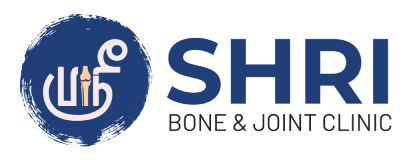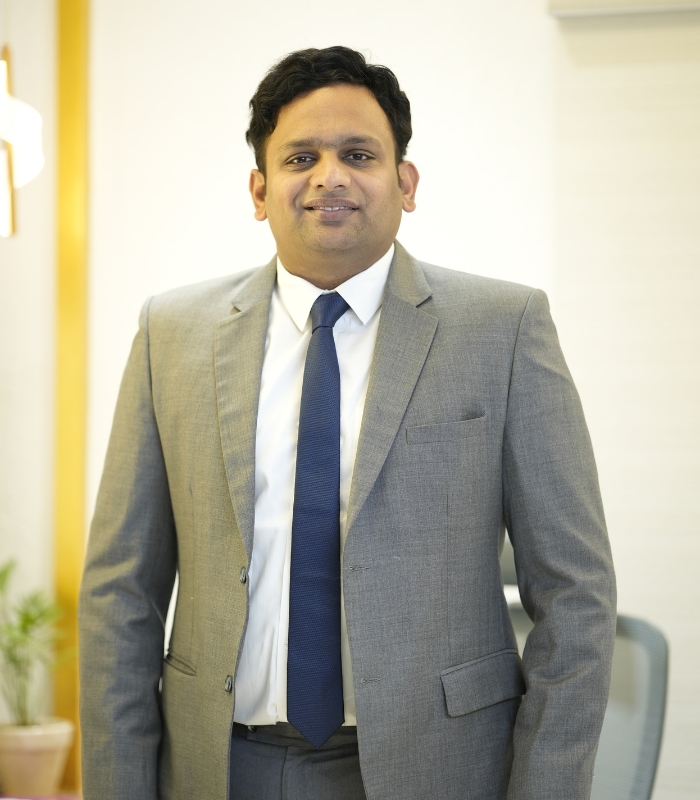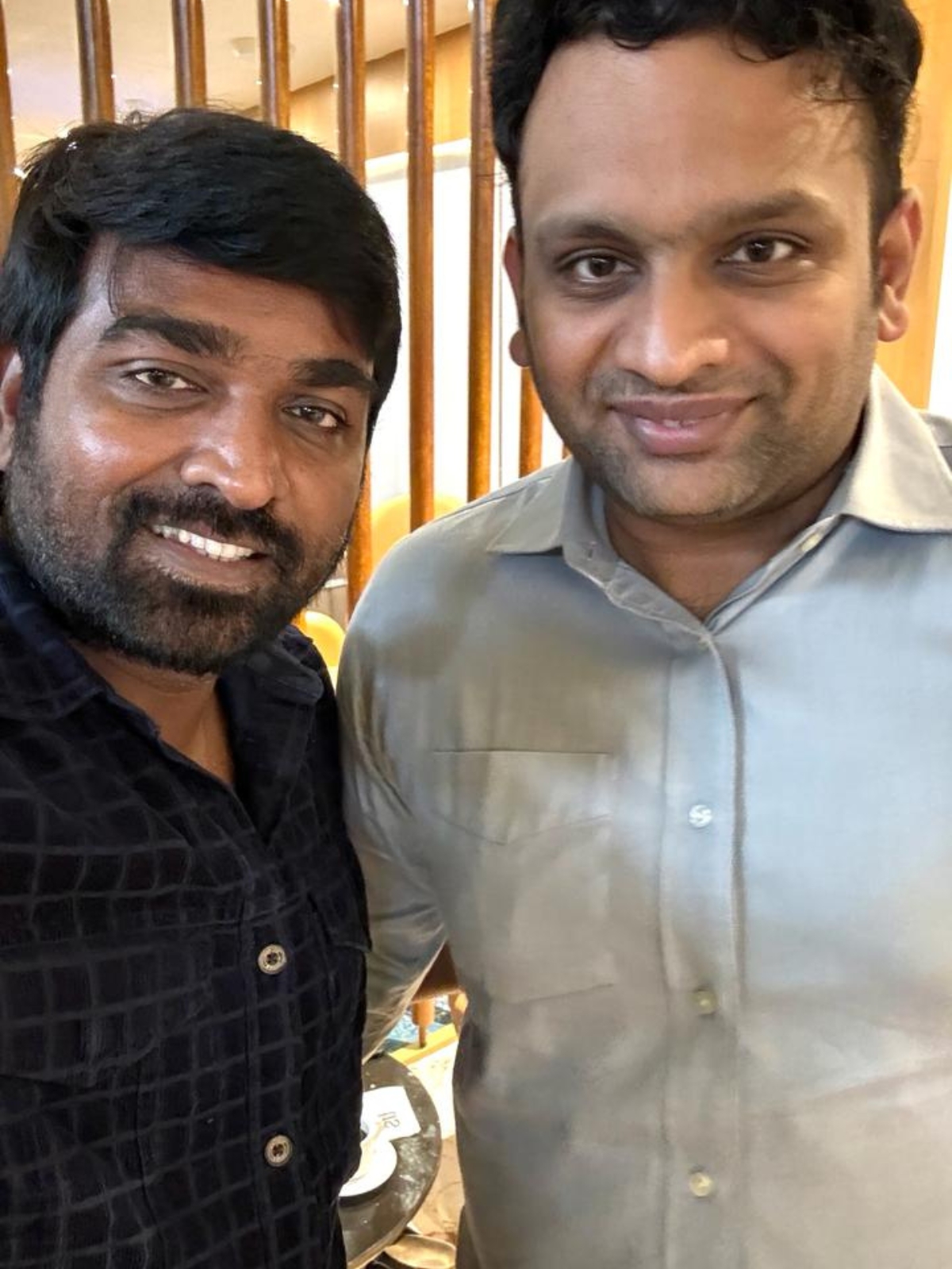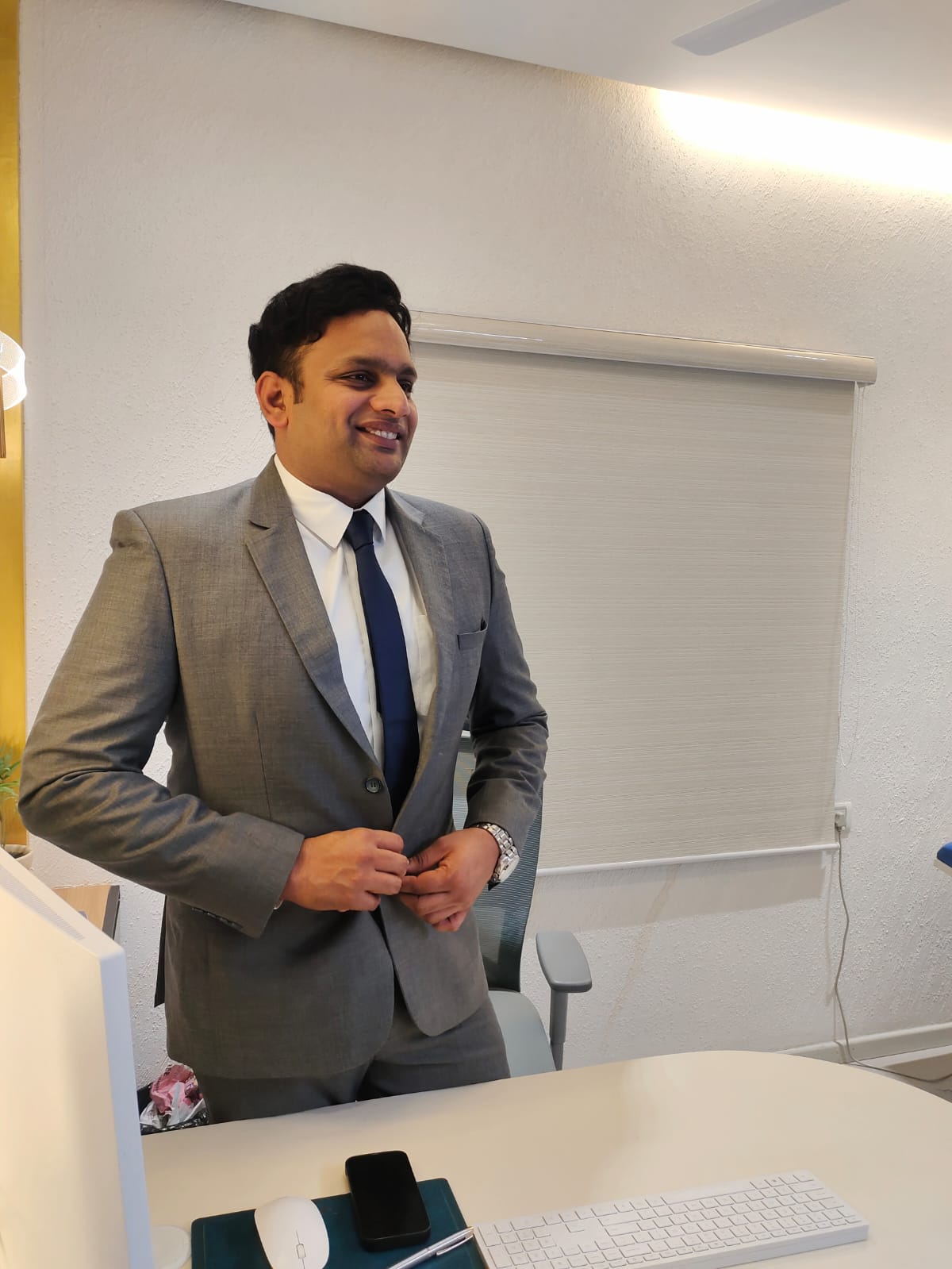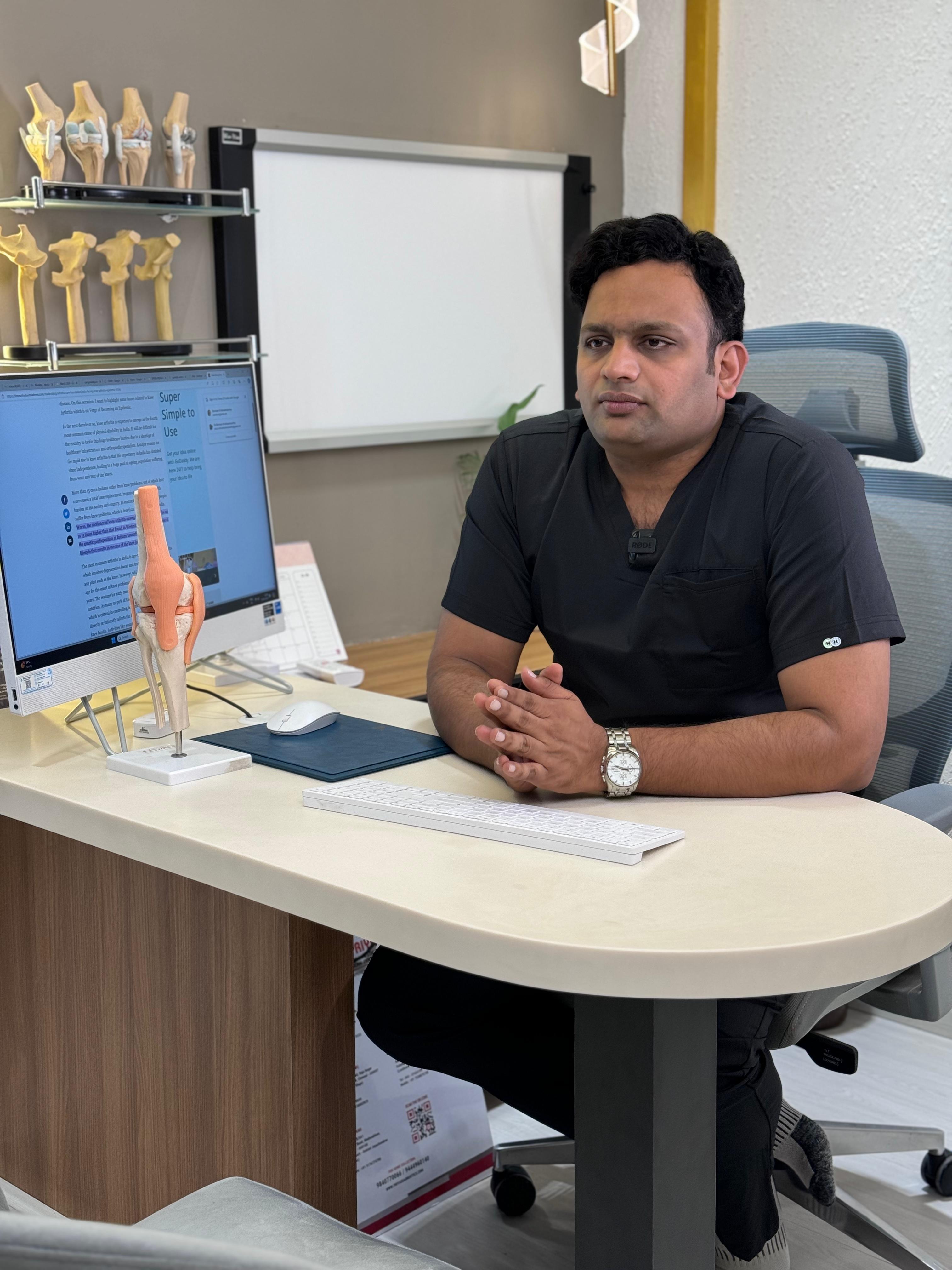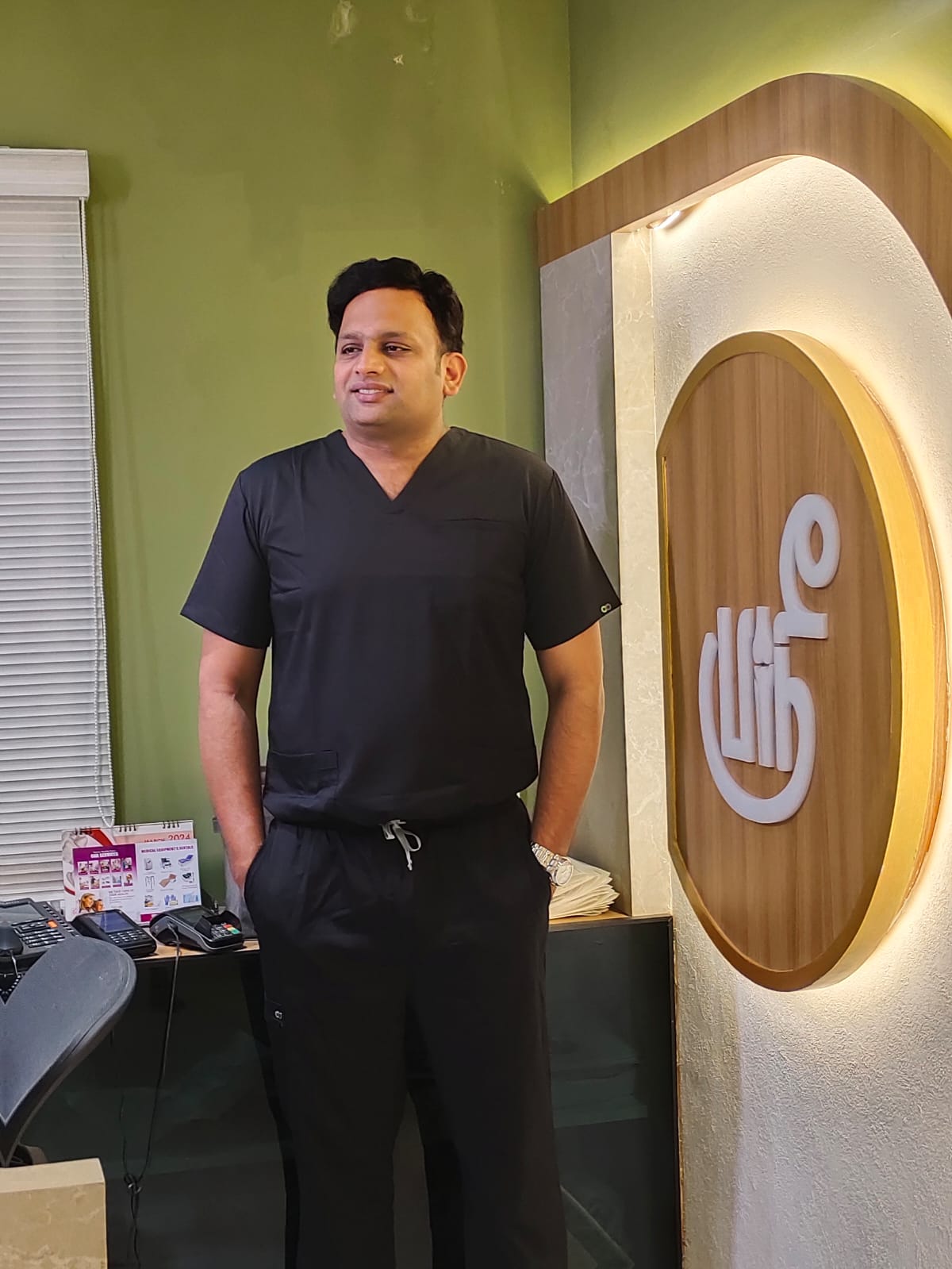What is Shoulder Dislocation?
Shoulder dislocation occurs when the upper arm bone (humerus) pops out of the cup-shaped socket (glenoid) that’s part of the shoulder blade. It is one of the most common dislocations, often resulting from sports injuries, falls, or trauma.
The shoulder’s ball-and-socket structure, which allows for an extensive range of motion, also makes it susceptible to dislocation.
Symptoms include severe pain, swelling, inability to move the joint, and visible deformity. Immediate medical attention is crucial to reposition the bone and prevent complications like nerve damage, ligament tears, and recurring dislocations.
Treatment typically involves immobilization, pain relief, and physical therapy to restore function and strengthen surrounding muscles. In severe or recurrent cases, surgery might be necessary to repair or tighten the ligaments and tendons around the shoulder.
Types of Shoulder Dislocations
Anterior Dislocation:
The most common type, accounting for about 95% of shoulder dislocations. It occurs when the humeral head is displaced forward, typically due to a fall on an outstretched arm or a direct blow to the shoulder.
Posterior Dislocation:
Less common, making up about 2-4% of cases. It happens when the humeral head is displaced backward, often resulting from seizures, electric shocks, or a direct force applied to the front of the shoulder.
Inferior Dislocation:
Rarely, this type occurs when the humeral head is displaced downward. It can happen due to a hyperextension injury where the arm is forcefully pulled overhead, resulting in a condition sometimes referred to as “luxatio erecta”, where the arm is stuck in an upright position.
Superior Dislocation:
Extremely rare, occurring when the humeral head is displaced upwards. This type usually results from high-energy trauma and is often associated with significant damage to surrounding structures.
Causes
- High-impact sports such as football, rugby, and basketball can lead to shoulder dislocations due to falls, collisions, or overextension.
- Falling onto an outstretched arm or directly onto the shoulder can cause the humeral head to pop out of the socket.
- Accidents, such as car crashes or heavy blows to the shoulder, can result in a dislocation.
- During a seizure, muscle contractions can be strong enough to dislocate the shoulder, typically resulting in posterior dislocations.
- Similar to seizures, an electric shock can cause severe muscle contractions, leading to dislocation.
- Repeated overhead movements or heavy lifting can weaken the shoulder ligaments over time, increasing the risk of dislocation.
- Some individuals have looser ligaments or a condition called hypermobility, making their shoulders more prone to dislocation.
Risk Factors
Sports Participation:
Engaging in contact sports (e.g., football, rugby) or sports requiring overhead motions (e.g., basketball, volleyball, swimming) increases the risk of shoulder dislocations.
Previous Dislocations:
Individuals who have previously dislocated their shoulder are at higher risk for recurrent dislocations due to potential damage to the shoulder’s ligaments and capsule.
Age:
Young adults, particularly males, are more prone to shoulder dislocations due to higher activity levels and participation in high-risk activities.
Occupation: Jobs requiring repetitive overhead movements or heavy lifting can increase the risk of shoulder dislocations.
Genetic Factors:
Conditions like hypermobility syndrome, where the joints are more flexible than normal, can make the shoulder more prone to dislocation.
Inadequate Muscle Strength: Weak shoulder muscles, particularly the rotator cuff and scapular stabilizers, can reduce joint stability and increase the risk of dislocation.
Falls:
Older adults are at risk due to increased likelihood of falls, often associated with weakened muscles, poor balance, and bone fragility.
High-impact Activities:
Activities involving high-impact or traumatic forces, such as motor vehicle accidents, can lead to shoulder dislocations.
Symptoms
- Immediate and severe pain in the shoulder area, especially with movement.
- Visible deformity of the shoulder, where the shoulder appears visibly out of place or “squared off” rather than rounded.
Swelling and bruising around the shoulder joint. - Difficulty or inability to move the shoulder, with the arm often held in a protective position.
- Numbness, tingling, or weakness in the arm or hand can indicate nerve involvement.
- Involuntary muscle contractions around the shoulder joint, which can exacerbate pain.
- Tenderness around the shoulder, especially when touched.
Diagnosis
Medical History:
The doctor will ask about the circumstances of the injury, any previous shoulder dislocations, and symptoms experienced.
Physical Examination:
The doctor will examine the shoulder for signs of dislocation, such as deformity, swelling, tenderness, and limited range of motion. They may also check for nerve or blood vessel damage by assessing sensation and blood flow in the arm and hand.
Imaging Tests:
- X-rays are the primary imaging tool used to confirm a shoulder dislocation. They show the position of the humeral head in relation to the glenoid cavity and can reveal any associated fractures.
- An MRI may be ordered to assess soft tissue damage, such as tears in the rotator cuff, labrum, or ligaments.
- In some cases, a CT scan may be used to get a more detailed view of the bone structures and any associated fractures.
Immediate Management and First Aid
Immobilize the Shoulder:
- Keep the injured arm in the position it is in.
- Do not try to move or reposition the shoulder.
- Use a sling or a piece of cloth to immobilize the arm against the body.
Apply Ice:
Apply ice packs to the affected shoulder to reduce swelling and pain. Wrap the ice pack in a cloth to avoid direct contact with the skin and apply for 15-20 minutes every hour as needed.
Pain Relief:
Over-the-counter pain relievers such as ibuprofen or acetaminophen can help manage pain and reduce inflammation.
Seek Medical Attention:
It’s essential to seek immediate medical attention. Do not attempt to relocate the shoulder yourself, as improper handling can cause further damage to the muscles, ligaments, nerves, or blood vessels.
Avoid Food and Drink:
If there’s a possibility that the person will need sedation or anesthesia for shoulder relocation, avoid giving them food or drink.
Comfort and Reassurance:
Keep the person as comfortable and calm as possible while waiting for medical help
Treatment Options
Non-Surgical Treatment Options
Closed Reduction:
A healthcare professional will manually reposition the dislocated shoulder back into its socket. This procedure often requires sedation or anesthesia to relax the muscles and reduce pain.
Immobilization:
After reduction, the shoulder is typically immobilized for a few weeks using a sling or shoulder immobilizer to allow the ligaments and tissues to heal properly.
Pain Management:
Nonsteroidal anti-inflammatory drugs (NSAIDs) such as ibuprofen or acetaminophen can help manage pain and reduce inflammation.
Physical Therapy:
Rehabilitation exercises begin once the initial pain and swelling have subsided. Physical therapy focuses on restoring range of motion, strengthening the shoulder muscles, and improving joint stability to prevent future dislocations.
Activity Modification:
Avoiding activities that put excessive strain on the shoulder until it is fully healed is essential to prevent re-injury.
Surgical Treatment Options
Bankart Repair:
Surgery to repair a torn labrum (Bankart lesion), which is common in anterior shoulder dislocations. The labrum is reattached to the glenoid cavity to stabilize the shoulder.
Capsular Shift:
Tightening of the joint capsule, which may become stretched or damaged after repeated dislocations, reduces excess joint laxity and enhances stability.
Latarjet Procedure:
Transfer of a piece of the coracoid process (a part of the shoulder blade) along with its attached muscles to the front of the glenoid cavity. This increases the stability of the shoulder joint, particularly in cases of significant bone loss or recurrent dislocations.
Rotator Cuff Repair:
If the rotator cuff tendons are torn during a dislocation, surgical repair may be necessary to restore shoulder function and strength.
Bony Procedures:
In cases where there is significant bone loss or fracture, surgeries like bone grafting or fixation of fractures may be required to restore the normal anatomy and function of the shoulder joint.
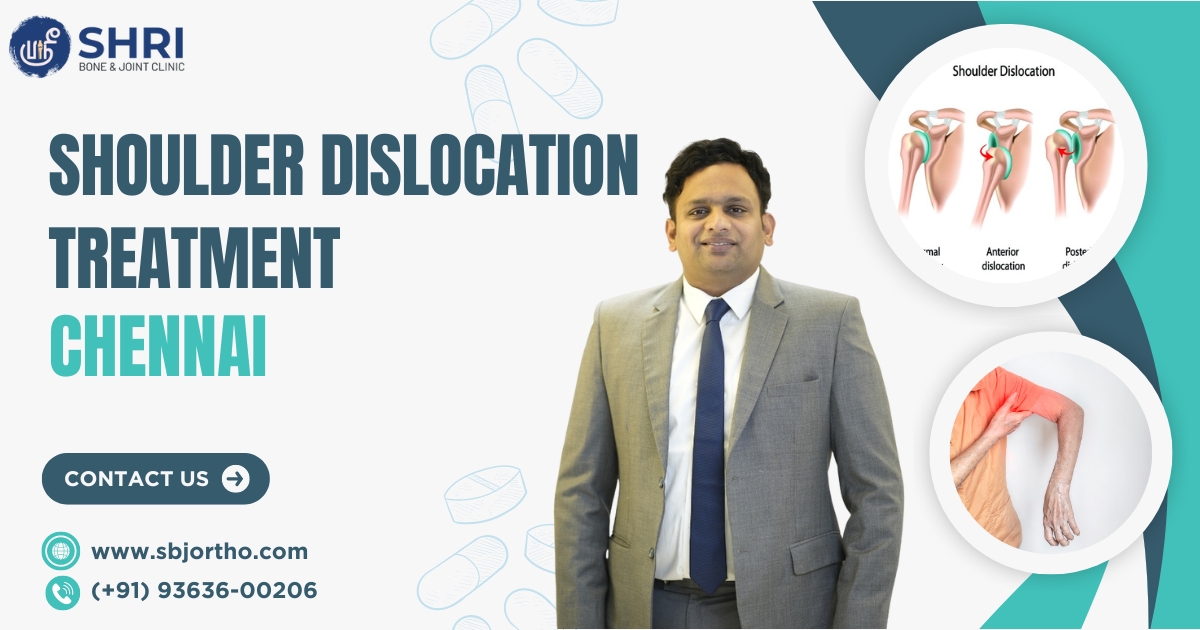
Rehabilitation and Recovery
Regardless of whether surgical or non-surgical treatment is chosen, a structured rehabilitation program is crucial for recovery. Physical therapy helps in regaining strength, flexibility, and stability. The duration and intensity of rehab vary based on the treatment approach and individual healing rates.
Regular follow-up appointments are necessary to monitor the progress and ensure proper healing. The goal of treatment is to restore normal shoulder function, prevent future dislocations, and allow the patient to return to their daily activities and sports without limitations.
Early Phase (0-2 weeks)
Goals:
- Reduce pain and inflammation.
- Protect the shoulder from further injury.
Activities:
- Immobilization: The shoulder is typically immobilized with a sling or shoulder immobilizer.
- Ice Therapy: Apply ice packs for 15-20 minutes several times a day to reduce swelling and pain.
- Pain Management: Use prescribed or over-the-counter pain relievers as directed by a healthcare provider.
Intermediate Phase (2-6 weeks)
Goals:
- Restore range of motion.
- Begin gentle strengthening exercises.
Activities:
- Range of Motion Exercises: Passive and assisted movements to improve flexibility without straining the shoulder. Exercises include pendulum swings, passive forward flexion, and gentle assisted abduction.
- Gradual Weight Bearing: Gradually reintroduce weight-bearing activities as tolerated.
- Physical Therapy: Begin supervised physical therapy focusing on controlled, gentle movements to regain range of motion.
Strengthening Phase (6-12 weeks)
Goals:
- Strengthen the shoulder muscles, particularly the rotator cuff and scapular stabilizers.
- Improve shoulder stability.
Activities:
- Strengthening Exercises: Progressive resistance exercises targeting the rotator cuff, deltoid, and scapular muscles.
- Examples include internal and external rotation with resistance bands, shoulder presses, and scapular retraction exercises.
- Functional Training: Incorporate functional activities that mimic daily tasks or sports-related movements.
Advanced Phase (3-6 months)
Goals:
- Return to total activity.
- Prevent future dislocations.
Activities:
- Advanced Strengthening: Continue to increase the intensity and complexity of strengthening exercises. Incorporate plyometrics and sport-specific drills if appropriate.
- Proprioception and Stability Training: Balance exercises and stability drills to enhance joint awareness and stability.
- Gradual Return to Activity: Gradually reintroduce activities and sports, ensuring
the shoulder can handle the demands placed on it.
Long-term Maintenance
Goals:
- Maintain shoulder strength and flexibility.
Prevent recurrence.
Activities:
- Regular Exercise: Continue a regular exercise regimen focusing on shoulder strength, flexibility, and stability.
- Activity Modification: Avoid activities that place undue stress on the shoulder or adopt proper techniques to reduce the risk of injury.
- Follow-up: Regular follow-up with a healthcare provider to monitor shoulder health and address any concerns.
Why Choose Shri Bone & Joint Clinic for Shoulder Dislocation Treatment in Chennai, India?
Choosing Shri Bone & Joint Clinic for shoulder dislocation treatment in Chennai, India, offers numerous advantages. Renowned for its expert orthopedic specialists, we provide comprehensive care using advanced techniques for diagnosis and treatment. With personalized rehabilitation programs and ultra-modern facilities, patients receive top-notch care tailored to our specific needs.
Our clinic’s team of experienced orthopedic surgeons ensures precise and effective treatment, minimizing recovery time and preventing future dislocations, for those seeking reliable and specialized orthopedic care in Chennai, Shri Bone & Joint Clinic stands out as a premier choice for shoulder dislocation treatment.
Best Doctor for Shoulder Displacement Treatment in Chennai, India
Dr. Shriram Krishnamoorthy from Shri Bone & Joint Clinic is the best doctor for shoulder displacement treatment in Chennai, India. With expertise in Total Shoulder Replacement / Arthroplasty in Chennai and Reverse Shoulder Replacement / Arthroplasty in Chennai, he provides comprehensive and advanced care.
Dr. Krishnamoorthy is renowned for his precise surgical techniques and personalized rehabilitation programs, ensuring optimal recovery and long-term results. His commitment to patient care and use of cutting-edge technology make him a trusted specialist for shoulder treatments, making Shri Bone & Joint Clinic the top choice for those seeking expert orthopedic care in Chennai.
Cost of Shoulder Dislocation Surgery in Chennai, India
The cost of shoulder dislocation surgery in Chennai, India, varies based on the procedure and hospital. Closed reduction typically costs between ₹10,000 to ₹30,000.
Arthroscopic surgery ranges from ₹80,000 to ₹1,50,000, while open surgery costs between ₹1,50,000 to ₹3,00,000.
Total Shoulder Replacement / Arthroplasty costs around ₹3,00,000 to ₹5,00,000, and Reverse Shoulder Replacement / Arthroplasty ranges from ₹3,50,000 to ₹6,00,000. Get the best and top notch Shoulder dislocation surgery at an affordable price from Shri Bone & Joint Clinic in Chennai, India.
How long does a dislocated shoulder take to heal?
A dislocated shoulder typically takes 6-12 weeks to heal, depending on severity and adherence to rehabilitation protocols.
What is the best treatment for a dislocated shoulder?
The best treatment for a dislocated shoulder involves immediate reduction, immobilization, pain management, and physical therapy for complete recovery.
What is the first aid treatment for a dislocated shoulder?
First aid for a dislocated shoulder includes immobilizing the arm, applying ice, administering pain relief, and seeking immediate medical attention.
What to do after a dislocated shoulder?
After a dislocated shoulder:
- Follow up with a doctor.
- Immobilize the shoulder.
- Manage pain.
- Start prescribed rehabilitation exercises.
Can you recover 100% from a shoulder dislocation?
Yes, with proper treatment and rehabilitation, it’s possible to recover 100% from a shoulder dislocation, especially after a first-time injury.
Can a dislocated shoulder heal naturally?
A dislocated shoulder requires medical intervention for proper realignment; natural healing without treatment can lead to complications and instability.
Better Health Care is Our Mission
Phone
Shri Bone & Joint clinic
#1, 2nd Main Road
Nehru Nagar
Adyar
Chennai - 20.
Phone: 044 3549 0206
MGM Healthcare
No.72,
Nelson Manickam Road,
Collectorate Colony, Aminjikarai,
Chennai - 600029.
Phone: 044 4524 2424
